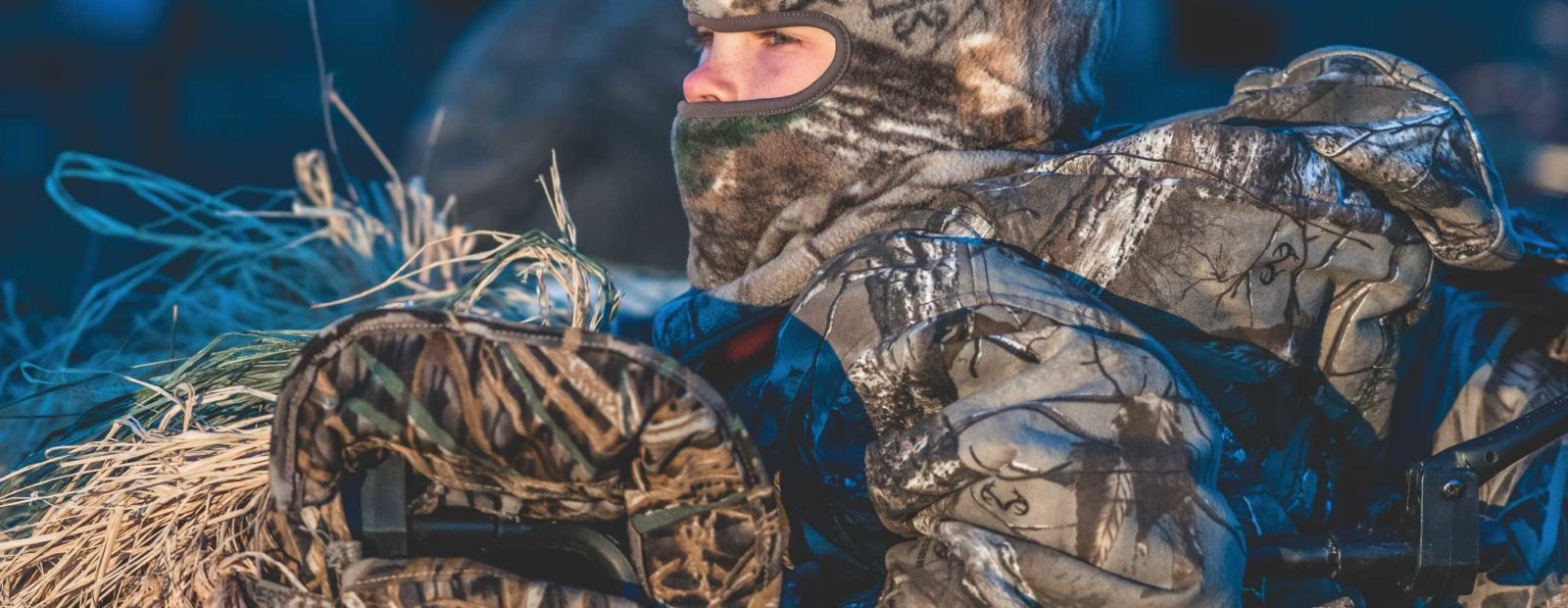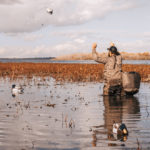Engaging the next generation of waterfowl hunters with fun activities in the off season
Duck season has come to a close for another year. We’re in the doldrums for an agonizing couple of months. What is an industrious waterfowler to do to pass the time between times? How about inspiring the next generation?
For the record, I am writing this article during the great COVID-19 pandemic of 2020 so we’re all pretty much landlocked per stay-at-home orders in nearly every state. My guess is if you’re reading this, you have other, preferred methods of “social distancing” be it in a cold duck blind or in a layout blind in a hot goose field.
Fear not, my fellow fowler. I am resurrecting some tried and true activities to both fill the off-season void and engage kids in the sport we love. I spent many a weekend day on these activities with my young sons many moons ago to, hopefully, nurture their growing interest in the magic that is waterfowling.
If you are the parents of young children, or if you are the cool uncle or aunt, pay close attention to what follows. Maybe you are the grandparent of some energetic youngsters and are in need of an engaging activity for when their parents drop them off to spend an afternoon. Maybe you just want to volunteer with a local after-school youth group. If you want to get the next generation involved in carrying the torch of waterfowling, give one of these activities a shot. Who knows, you might just have more fun than the kids!
Decoys, Decoys, Decoys!
Let’s face it, decoys are just toys for grownups. They’re made of plastic and come packaged in a box for you to dive into like Ralphie tearing into his official Red Ryder carbine action, 200-shot, range model air rifle in the classic yuletide movie, A Christmas Story.

Decoys take a beating during a typical hunting season. They are hauled across the country through mud, dust, weeds, algae, and retriever poo. They are tossed in and out of truck beds, boats, and trailers. They are going to need some T.L.C. if they are going to live a long life. Why not recruit some helpers?
Wash. Rinse. Dry. Store. That’s the recipe and the ingredients are simple and inexpensive.
- Soap: I’ve used anything from car wash soap to dish soap. I like car wash soap the best but grab any mild soap you have laying around that will lather up.
- Scrub Brush: A car washing brush works great but so does a brush from the household cleaning kit. Just something to scrub away the dried mud or water stains.
- Water: Keep it simple. A garden hose and a plastic 5-gallon bucket is all you need. A small, plastic kids swimming pool works great, too, especially if it’s July and 190 degrees in the shade.
- Sun and Wind: This is all you need to dry your decoys. Forget the hair dryer!
This is a great summertime activity because anytime you mix kids and water someone is going to get wet and it’s usually the grownup. Let the kids haul the decoys to the yard. Let them play with the decoys like action figures. Give each of them an important “job” to do. Someone fills the container with water. Another adds soap. Then there’s the scrubbing and rinsing-off of the soap. Ask one of them to hunt for a sunny spot for the decoys to dry while everyone enjoys a lemonade as a reward for a hard afternoon’s work.
The point is make it fun. Do it on a hot summer day so it feels refreshing to get soaked by a hose. Let them clean as many decoys as they want but stop when you sense they are finished. Then reward them with a cool drink. I used the local sno-cone shop as bait, uh, I mean as a reward!
Duck Blind Rehab
Anyone who hunts from a permanent duck blind knows how it looks after a full season of use. If yours is anything like mine it’s dirty, unorganized, and smells of a nice potpourri of wet dog, a dead rat, and your pal Mike’s rancid coffee mug.
Target a nice early spring day with the temperature in the 50s or 60s, sunny and not too windy. Get the kids in the truck and head out to the duck blind. Bring a few snacks and offer them the special treat of stopping on the way home at the convenience store for a special snack or drink.
Again, assign a special task to each child. Have one be the “organizer” and another be in charge of “hunting” for all the empty shell casings that didn’t get picked up during hunts. Reuse a few plastic grocery sacks for collecting random trash items.
One thing I used to do is bring along an old decoy and one of my sons’ Daisy Red Ryder BB guns to serve as a target for some off-season duck blind shooting action. Make it a contest to see who can hit the decoy the most times out of five or ten shots. Be prepared, though, for the kids to outshoot you!
The goal of this endeavor is not to clean and organize your duck blind. Rather, it’s a great way to spend a spring day with family or friends and continue to cultivate the passion of waterfowling.
Duck Calls 101
This is one of those activities that is great to do on a rainy day in either spring or early fall. We all have a few duck and goose calls on a lanyard in our blind bags that endured an entire season of weather and getting bounced around in boats and duck blinds. Those calls could use some rehabbing so why not get the kids involved?

To effectively clean a call one really needs to take it apart down to its essential elements, i.e., barrel, insert/tone board, cork, and reed(s). This is a great time to engage kids in a lesson in the anatomy of duck calls and the mechanics of how calls produce sound. It’s also a great opportunity to make the connection to elementary school music education programs to provide a real-life example of how sound is produced from a woodwind “instrument.”
If you have enough calls give every kid a call. Or, if they have their own calls, better yet. Discuss with them how the air blown into the call makes the reed(s) vibrate to create sound. Then let each of them make a sound or, for more proficient callers, let them blow a few quacks or cadences. If you really want to get crazy, organize a calling demonstration where each child makes a few calls for the others. Reward their efforts with a snack (graham crackers always worked for my boys)!
Give them a bowl or other container in which to keep their call parts. Help each of them rinse their call parts with some mild soap and warm water. Dry the calls thoroughly on a paper towel or napkin then the kids can come back later to reassemble their calls.
The Art of Waterfowling
Need another rainy spring day activity? Clear off the kitchen table, grab some crayons, craft paints, brushes, and maybe even some 3-D art supplies and provide an opportunity for the kids to let their creative juices flow.
Keep this simple. Have the art supplies laid out and offer the kids a challenge to sketch, paint, or create anything they want related to ducks, geese, their memory of a waterfowl hunt, or even your family’s semi-pro retriever. Don’t place too many parameters on their creativity to let them fully explore their artistic side. Create along with them so they can absorb some of your creative energy.
When finished seize the opportunity to create your own in-house art exhibit by displaying the artwork in some creative way. Hang them from the fireplace mantle, spread them across the coffee table, or simply attach them with a magnet to the refrigerator. Take it a step further by firing up Facetime to contact grandparents, uncles, aunts, or family friends for a virtual art exhibit.
Living Room Duck Hunt
This one is my all time favorite. When my sons were younger we would transform our living room into the ultimate duck marsh, albeit indoors and with much imagination.
Start with reconfiguring your couch into a duck blind. Remove the couch cushions, stand them up in front of the couch, and use them for your duck blind walls. A simple roof can be created by draping a sheet or blanket across the arms of the couch.
Then grab a handful of decoys. Full body decoys with bases work great but any decoys will do, including floaters. Set up your decoy spread in front of your wicked-cool couch blind.
Next, have the kids grab the following:
- Any camouflage clothing they have
- A duck or goose call if they have one
- A toy dart gun and some foam darts
- A handful of stuffed animals or canvas retrieving dummies
Fire up an old waterfowl hunting DVD on the living room television and crank-up the volume. Then, I would hide behind the recliner and toss the stuffed animals in the air for my sons to shoot at with their dart guns. When our retriever was younger my sons would even have her sit next to their blind and send her to retrieve their harvest. It’s also an excellent opportunity for a refresher course in hunter safety.
Now you have five activities to help cure your off-season blues and engage the next generation of waterfowlers. Try them out during this challenging time of stay-at-home orders and social distancing. And don’t worry, it’s okay for the grownups to have fun with this, too!
Last modified: July 19, 2022














He’s the perfect person to come up with interesting activities in the off season! Love that he’s passing his love of duck hunting to the next generations ❤️